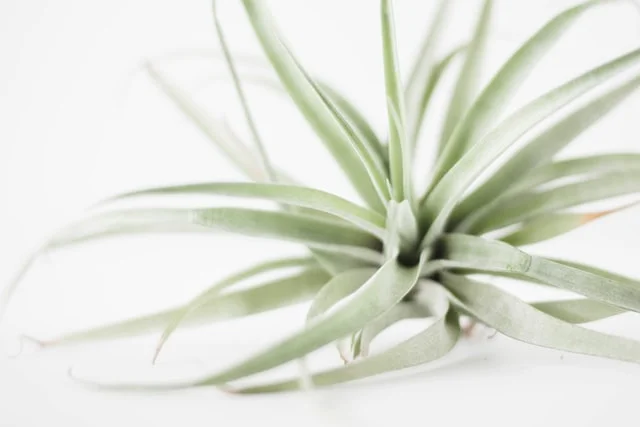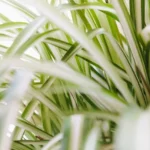Table of Contents
How to Care for Tillandsia Ionantha
Tillandsia Ionantha is one of the most common house plants and they are very eye catching. These plants are native to Central America and South America.
This plant is commonly referred to as air plants. This is a plant which will only reach up to eight centimetres in height and the leaves can be up to nine centimetres in length.
What Does Your Tillandsia Ionantha Require?
Light Requirements
Tillandsia Ionantha plants thrive on indirect light. It is best to avoid putting these plants in direct sunlight as the soil will dry out quite quickly and the leaves will become scorched especially if the plant is in a low level of humidity.
These plants do well in indoor areas that are lit using florescent light. When these plants do not have enough light, they will not flower, therefore its important to give them the correct amount of light.
Temperature Requirements
Tillandsia Ionantha plants are native to warm humid climate. The ideal temperature for these plants is between fifteen and twenty-six degrees Celsius. These plants need to be sprayed with mist on a regular basis.
Although these plants are accustomed to tropical environments, they do enjoy slightly cooler temperatures during the winter months.
Cooler temperatures over the winter months will encourage flowering the following spring. It is important that there is a good amount of air circulating around these plants.
Soil Requirements
These plants can grow in the air and the roots of the Tillandsia Ionantha should not be placed into a potting medium.
When these plants are put into a hanging position, you may need to use wire or safe glue to ensure that it is secure. After about a month, the roots of the plant should begin to wrap onto the wood or mount on the other plants in the area.
Humidity Requirements
Tillandsia Ionantha plants tend to thrive in areas that are warm and humid. These plants do well with a couple of hours direct sunlight every day, but there must be a good amount of moisture in the air to avoid the plant wilting.
How to Water Tillandsia Ionantha?
The Tillandsia Ionantha plants do not require as much water as some other air plants, therefore they do not appreciate being soaked with water.
The best way to water these plants is with a light misting which should be done a couple of times every week. If the plant is in a climate that is dry and hot, then they will need to be misted a little more often.
In a dry climate, these plants can be run under a tap for a short period of time, but they should not be submerged. If you use this method for watering, then the plant will need to be tipped upside down so that any excess water is removed.
Trapped water in the leaves of this plant can be a big problem and over watering is one of the main reasons that these plants are unable to do well. Tillandsia Ionantha plants that are kept outdoors may not even need to be watered.
Types of Water to Use on Tillandsia Ionantha
The type of water that you use on the Tillandsia Ionantha plants is just as important as how often you water them. Avoid using distilled water on these plants. Soft water should be avoided due to the level of salt that it contains.
The best water to use is filtered water or water that has been left to sit long enough for the chlorine to dissipate. Aquarium water and pond water can be used as long as there is not a large number of reptiles or fish in the water.
How to Fertilise Tillandsia Ionantha?
There are fertilisers available that are designed specifically for air plants and these are good for Tillandsia Ionantha plants. These plants should be fed with a fertiliser once every two weeks during the summer months.
Another good idea is to add an organic fertiliser to the misting spray that is used on these plants.
Flowering and Fragrance of Tillandsia Ionantha
Tillandsia Ionantha plants only flower once. Some of these plants bloom with flowers that are in the shape of spikes and they tend to survive for a few months. Other plants may produce flowers that will only last for a few days.
During the flowering season, these plants will use most of the nutrients for the flowers and developing the young shoots.
After these plants have flowered, they tend to be wilted and pale. The plants should be sprayed with mist gently but avoid making the bloom too wet.
Extra Tips for Tillandsia Ionantha
Pests & Diseases
One good thing about the Tillandsia Ionantha plant is that there are virtually no pests or diseases that affects them.
These plants do not contain a high amount of minerals unlike plants that are grown in soil, which makes them less attractive to mites and insects.
If for any reason any pests do bother a Tillandsia Ionantha plant, then rinse the plant under the tap and hang it up to dry.
Pruning
Tillandsia Ionantha plants will grow to maturity and then flower and develop seed before they then die off. These plants will produce young plants and offsets before they die off.
Once the plant has died off, it can be pruned away whilst leaving the offshoots in place allowing them to develop. Air plants are known for being highly regenerative and the Tillandsia Ionantha plant is no different.
Propagation
Once the Tillandsia Ionantha plant is mature, it will readily produce offshoots, which are called pups. When the offshoots reach about half of the size of the mature plant, then they can be cut from the adult plant.
- Remove a few of the young shoots using a pair of sterilised scissors. Cut at the point where they are attached to the mature plants.
- The young shoots will not do well in isolation, therefore grow them as a group.
- Do not remove any of the shoots until they are one third the size of the adult plant.
- It is possible to harvest the offshoots that develop at the edges of the adult plant, especially if the plant is grown indoors.
- Place the young shoots under bright but indirect lights and nurture them until they start to develop.
FAQ
What Are the Advantages of Tillandsia Ionantha plants?
Tillandsia Ionantha plants are great decorative plants and they do not require much space. These plants are a miniature type of plant and they are best used as a hanging plant. Due to these plants being miniature, they will rarely need to be groomed.
How Do You Care for Tillandsia Ionantha?
The Tillandsia Ionantha plants are very easy to care for, and they make the perfect plant for anyone looking to add some greenery to their living space.
With these plants, there are no transplanting or soil requirements that need to be taken into consideration. These plants only have basic needs, so do not take much work to look after them and keep them alive.
Do Tillandsia Ionantha Die After Flowering
Tillandsia Ionantha plants will mature before flowering and producing seeds. Once these plants have flowered, they then die off and the offshoots can be left to develop.
How Long Do Air Plants Live?
Tillandsia Ionantha plant will only flower once in their lifetime, and the flowers can last for several months. Throughout the life of the plant, it will produce young shoots (pups).
If the plant is left as a clump when the adult plant dies, the pups will pull out the leaves. The lifespan of a Tillandsia Ionantha can range from a couple of months to a couple of years. The length of time that the plant survives will depend greatly on the care that it receives.
Can Tillandsia Grow in Full Sun?
Tillandsia Ionantha plants can be grown in full sun if they are kept at a high level of humidity. A high level of humidity will enable the plant to transpire.
When to Bring Tillandsia Ionantha Plants Indoors?
You can keep your Tillandsia Ionantha plant outdoors during the better weather, however it should be brought back indoors or put in a greenhouse during early autumn.
Why Are the Leaves on my Tillandsia Ionantha plant turning brown or discoloured?
Brown of bleached leaves on a Tillandsia Ionantha plant is usually due to the plants overheating usually because they are under glass and in direct sunlight.
The best way to deal with this problem is to provide more shade for the plant and increase the level of humidity that the plant is in.
How Long Does It Take for Tillandsia Ionantha to grow?
The length of time that it will take for a Tillandsia Ionantha to grow will depend on environment that it is kept in.
A Tillandsia Ionantha plant grown on its own can survive for several years. For these plants it can take several months for the seeds to germinate and growth activity will happen over between three and five years.
Photo by Sarah Bronske on Unsplash


